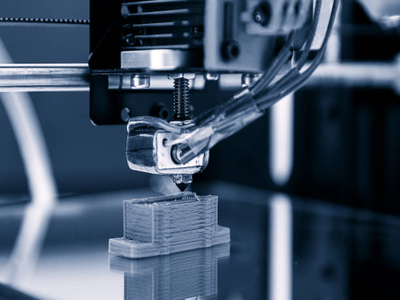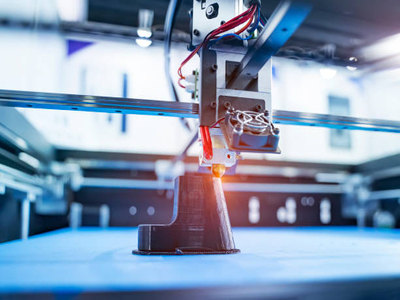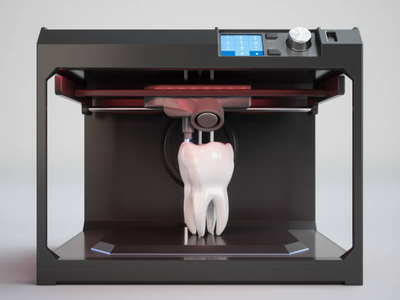Do 3D printers use a lot of electricity? Because the answer depends on a variety of factors, the answer can range.
You can expect your 3D printer to use between 50 and 125 Watts of power, depending on how long it’s used and the project you’re printing.
In this blog post, we’ll take a look at how 3D printers use electricity and discuss the pros and cons of this technology.
We’ll also provide some tips for reducing your electricity usage when using a 3D printer.
How Much Power Do Printers Use?

Printer technology has come a long way over the years with today’s printers sporting many advanced features and capabilities.
This includes the ability to do everything from printing high-quality 3D photos to manufacturing complex 3D objects.
While advances in technology have certainly improved printers, there’s still one important consideration when it comes to using these devices: their impact on power consumption.
Do 3D Printers Use a Lot of Electricity?
The answer to this question is somewhat nuanced and depends on factors such as the model and specific features of the printer.
By examining key metrics such as print speed, ink consumption rate, and energy usage levels, we can gain a better understanding of how much power these machines actually require.
Some studies have found that 3D printers may not necessarily be any more power-hungry than traditional laser or inkjet printers.
For example, research by Staples shows newer generation 3D printing technologies consume less energy compared to older plastic extrusion-type models.
To put it in perspective, an average printer for home use will use about 30-50 watts during printing.
Most 3D printers will use about 50 Watts, while larger printers will use more energy.
While there can be some variation depending on specific models and settings, most modern 3D printers do not use significantly more electricity than traditional 2D printers.
Check out this video testing how much power a 3D printer uses:
Read More: Interesting Facts About 3D Printing. These fun facts will blow your mind!
What Factors Affect a Printer’s Power Consumption
While 3D printers have become increasingly popular in recent years, there is still some debate about their energy efficiency.
Some experts argue that 3D printers use a considerable amount of electricity, while others contend that the emissions released by 3D printers are relatively low.
So, what do the facts say?
3D printers can use a fair amount of power when compared to traditional printing methods.
However, it is important to consider the fact that 3D printers are often used for large or complex prints that would otherwise require a great deal of time and resources.
In other words, while 3D printers may use more power than older methods, they are also much faster and more efficient compared to other processes that would create the same objects.
Emission
When it comes to emissions, 3D printers actually release relatively few pollutants into the atmosphere.
This is due to the fact that most 3D printers use filaments made from PLA plastic, which is biodegradable and does not release harmful chemicals during the printing process.
Furthermore, many companies are now using recycled materials to create their filaments, further reducing the environmental impact of 3D printing.
Overall, it is clear that 3D printing technology has come a long way in recent years in terms of energy efficiency and environmental friendliness.
While there is still some room for improvement, the fact remains that this technology is becoming increasingly popular and efficient.
A Printer’s Electricity Usage

The use of printers has long been a topic of debate, with many people expressing concerns about the amount of energy that they consume.
The primary reason for these concerns is the high amount of electricity required to power modern printers, from simple inkjet models to complex 3D printers.
While this increased energy usage does come with some drawbacks, there are also several advantages to using printers in our daily lives.
On one hand, because printers require powerful motors and heating elements to heat and apply pressure to transfer ink, it is true that printers use a significant amount of electricity.
In this sense, printers can be quite wasteful when left on standby or when being used to only print small jobs here and there throughout the day.
Additionally, 3D printers do require a lot of electricity in order to do their complex modeling work and produce high-quality output materials.
However, there are some ways to mitigate this and other 3d printing problems.
For one thing, it is possible to purchase printers that are designed specifically to minimize power consumption when not in use or during low-demand hours.
This may include an automatic sleep mode or set printer timers so jobs are printed at off-peak hours when demand for energy is lower.
Additionally, many offices and homes are now using solar power or other renewable energy sources to power their printers, which can help offset the carbon footprint of these devices.
Tips to Reduce Electricity Consumption When Using a Printer

There are several steps that you can take to reduce your electricity consumption when using a printer.
- First, power down the printer when it is not in use. This helps eliminate unnecessary electricity usage and also prevents overheating of any internal components.
- Another useful strategy is to adjust the brightness level of your printer display or use a different computer monitor if possible.
Reducing the amount of light on the screen will require less power from your printer, thereby helping you save energy. - Additionally, install updates for your printer software (here is free 3d printing software to try) regularly, as these often contain new efficiency features that can further reduce your reliance on electricity.
- Try choosing low-power mode settings for printing and scan jobs whenever possible, and consider unplugging your printer when it isn’t in use so phantom power consumption doesn’t take place.
Overall, these simple tips and strategies can help you significantly reduce your electrical consumption when printing documents at home or in the office.
Conclusion
3D printers do use a lot of electricity, but the cost is not as high as you might think.
You can expect to pay around $0.10 per hour for electricity, but the actual cost will depend on the type of 3D printer you have and how much electricity your region charges.
In general, 3D printers are not a huge drain on your power bill.
If you are concerned about the cost of electricity, you can always look into alternative energy sources like solar power.
Read More